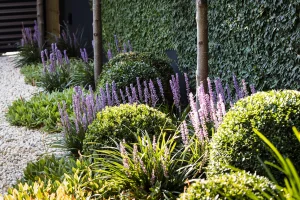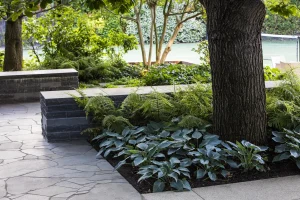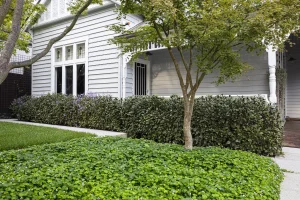Always wanted a lush, green lawn but were unsure of how to achieve it? Then this blog is for you!
We recently completed this project in South East Melbourne and wanted to share how we achieved this lush, green lawn! Before we delve any deeper, we must state that each situation will be different, so, unfortunately, it’s not a one-size-fits-all approach to lawn care. Different grass types, shade conditions, soil types, and drainage play a significant part in what kind of lawn you should use and what strategy/ timings to create and maintain a lush lawn. Some basic tips below can get you on your way to being the envy of the neighbourhood.

General Tips
We like to use a product called Acelpryn for our lawns, and this product is easily sourced online and is safe for domestic use. It prevents most of the nasty bugs and grubs that can destroy your lawn. We usually apply twice a year, in spring and autumn. Then we apply a granular fertiliser. Be sure to read the label for rates and watering in afterwards.
Then, depending on the circumstances and soil conditions, apply a Lawn/Garden Wetting agent, which really helps your lawn suck in the water and nutrients it needs instead of beading from the surface and going down the drain. You can apply a selective herbicide should you wish to remove any unwanted clover, poa, cape weeds, paspalum etc.
Scalping, Scarifying, Coring and Sanding
For this particular lawn, here are some additional steps we’ve taken only last month:
Step One – Scalp/ Scarify
You’ll want to complete this step in early-mid spring (aka now!). If you have warm-season grass (i.e. Kikuya, Wintergreen, Tiff-Tuff, Santa Anna), you can do a process called scalping. Using your lawnmower, you should be able to mow (scalp) the grass as low as you can. Scalping helps remove some of the high spots and removes a lot of the leaf and dead spongy thatch. If you have warm-season grass that has been down for a few years, you could also benefit from a process called Scarifying. A Scarifier looks like a mower from afar but has multiple blades that cut vertically. As such, the blades are cutting into the roots of your lawn and not only remove thatch but cut the root rhizomes in the soil’s surface, allowing oxygen, fertilisers, and water to get to the roots easier, therefore promoting new fresh and thicker growth. It’s probably not a required process on a brand new turf area of less than a year as the roots are still trying to establish.
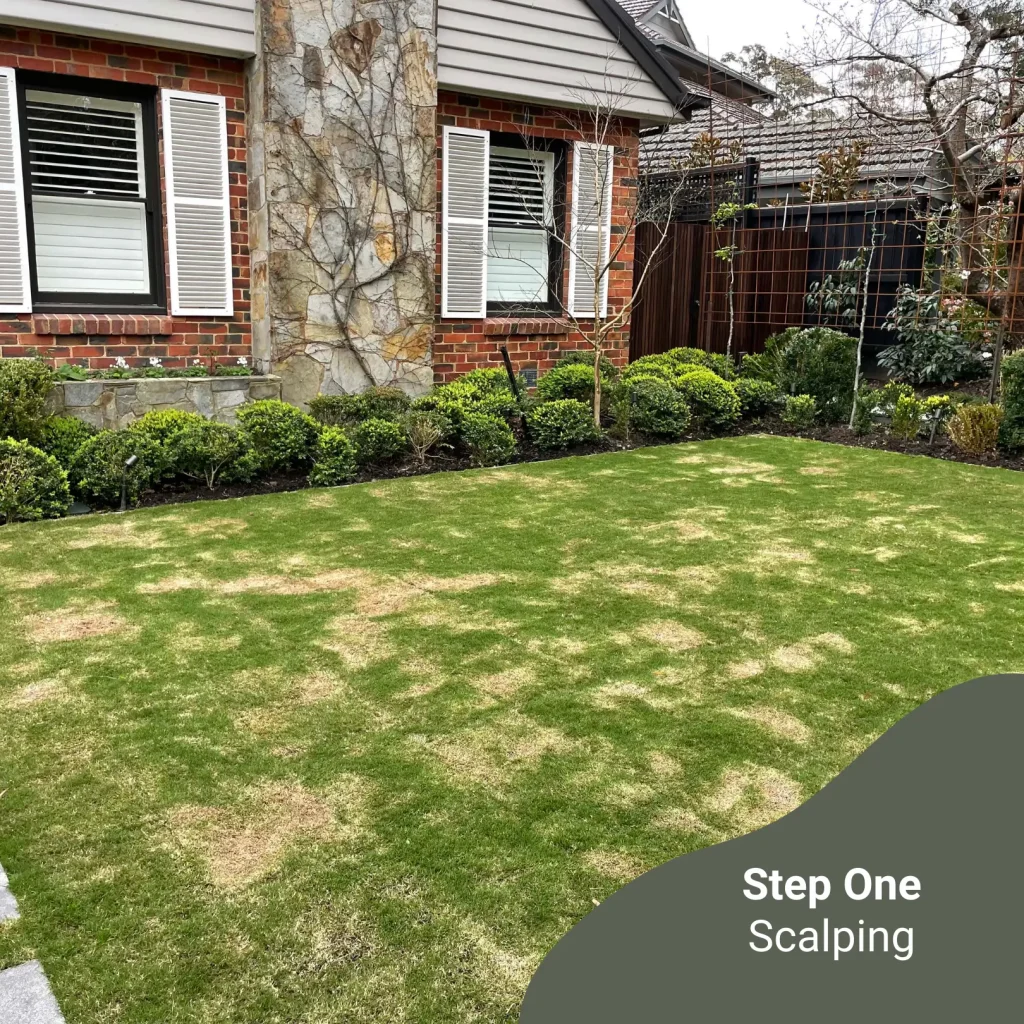
Step Two – Core
Lawns are heavy traffic areas and frequently become compacted. For heavily compacted soils, coring can be undertaken. The turf in the images is relatively new, so this wasn’t required, but it will be carried out in the years to come as the lawn becomes more established and soils are compacted. Coring really helps with getting the oxygen and nutrients, including water, to the root base.
Step Three – Sand
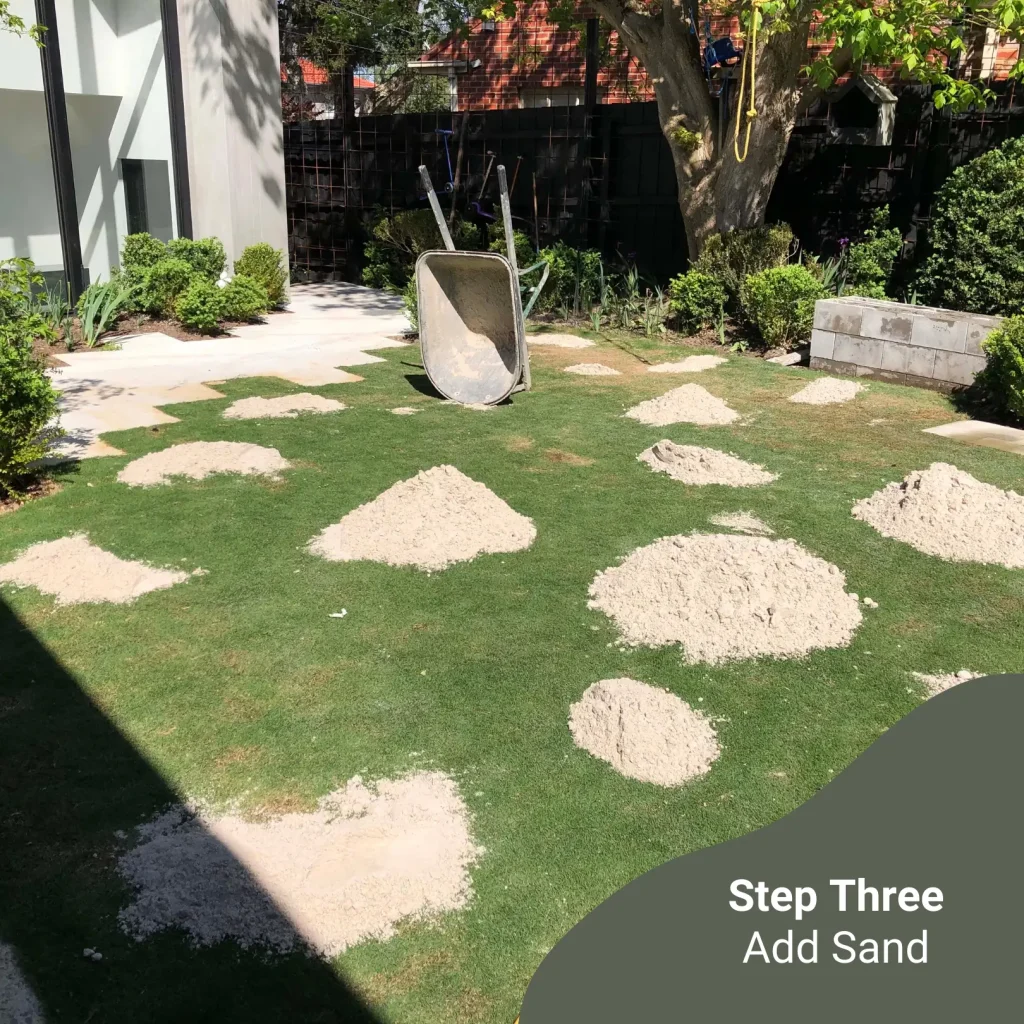
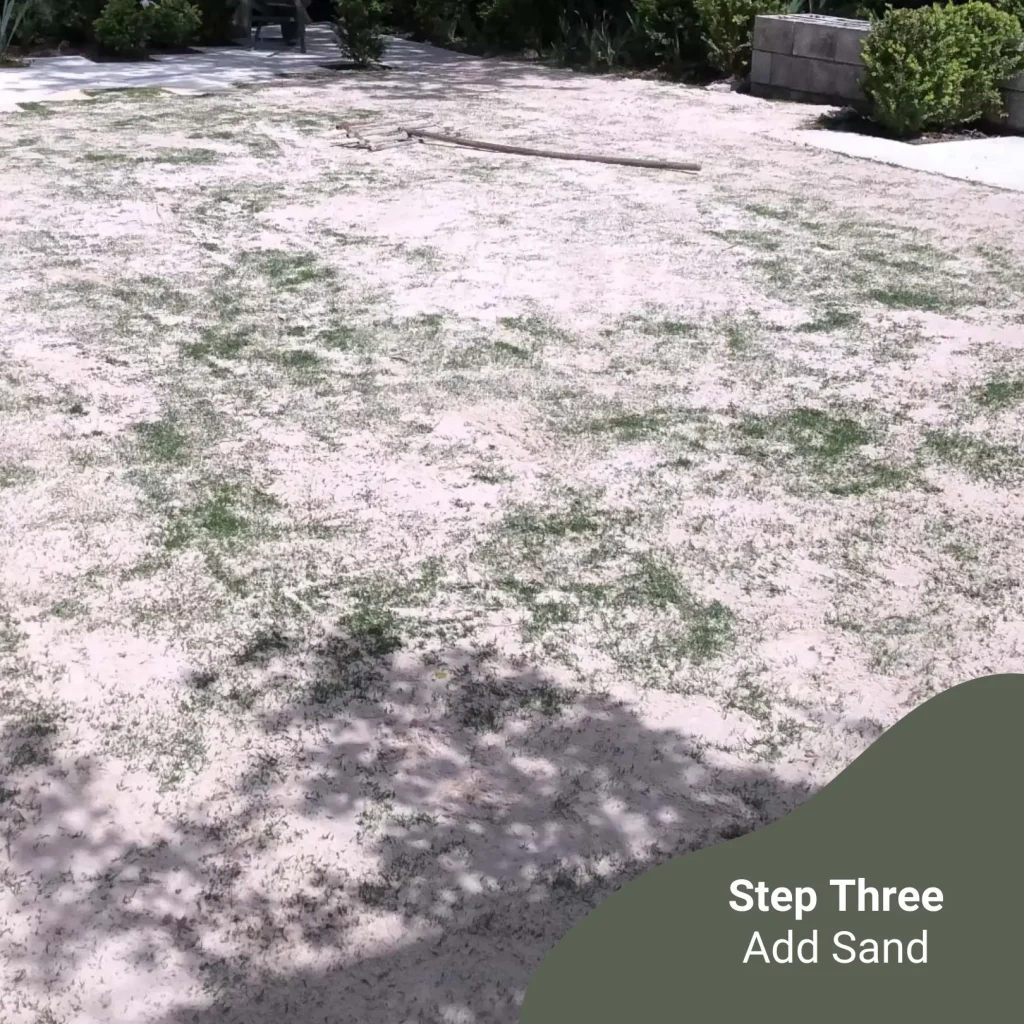
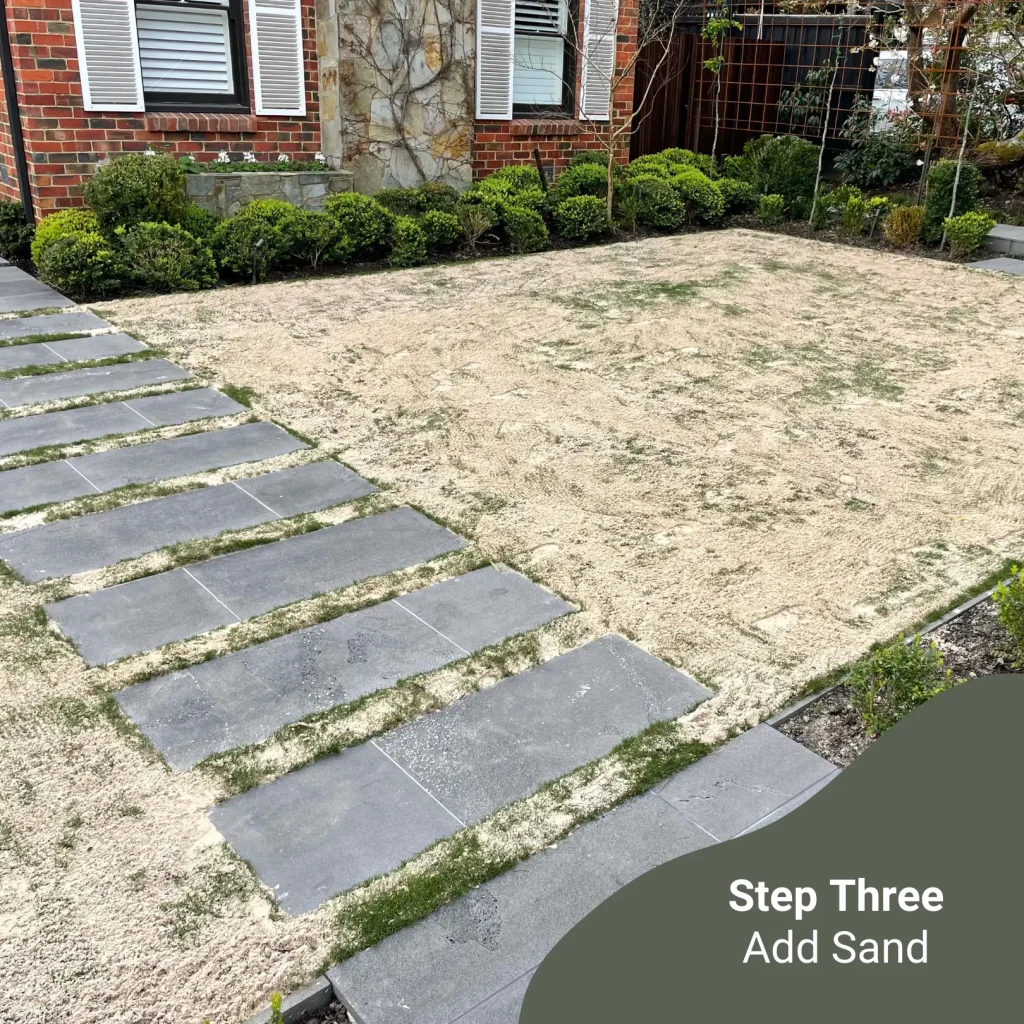
You’ll want to ensure you have fine or triple washed top dress sand from a supplier. It’ll look very much like beach sand, and most garden suppliers will have it if you tell them what you are doing with it. We recommend approx—1/4 m of sand to every 50sqm of lawn. Push and drag it around with a lawn leveller (if you have one) or a wide, stiff broom/steel rake. Be careful not to go too heavy on the top dress as you may smother your lawn. Try to bring up the low sections in stages. Your lawn will begin to soak in the sand and, after two weeks, you will start to see lush green grass emerge.


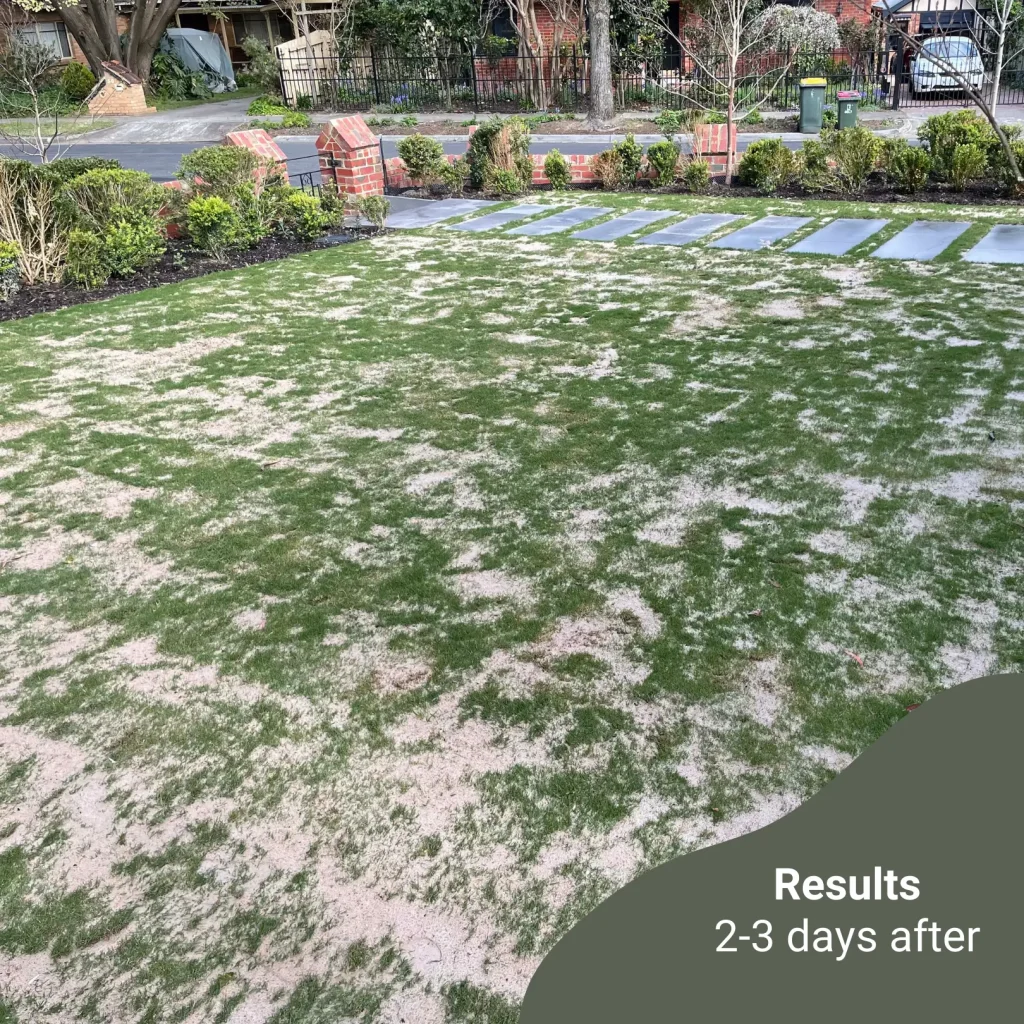
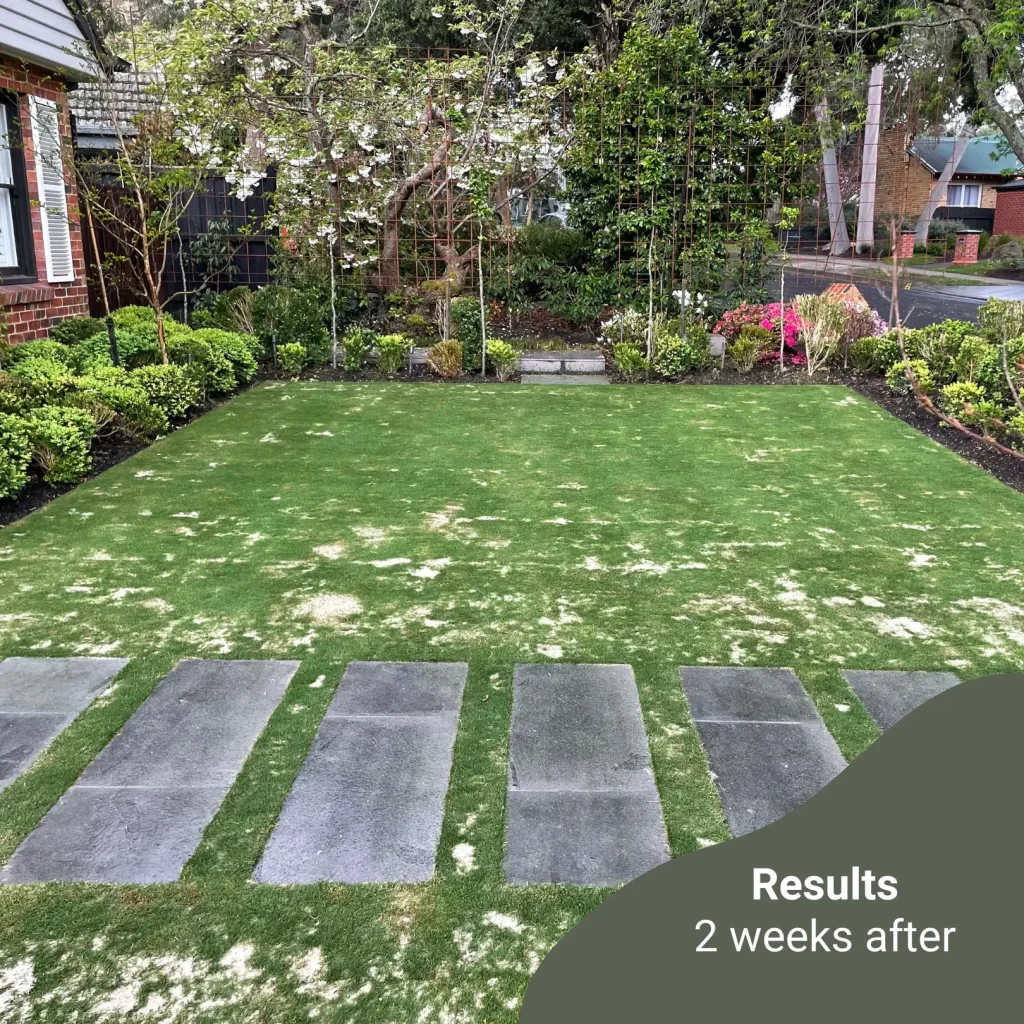
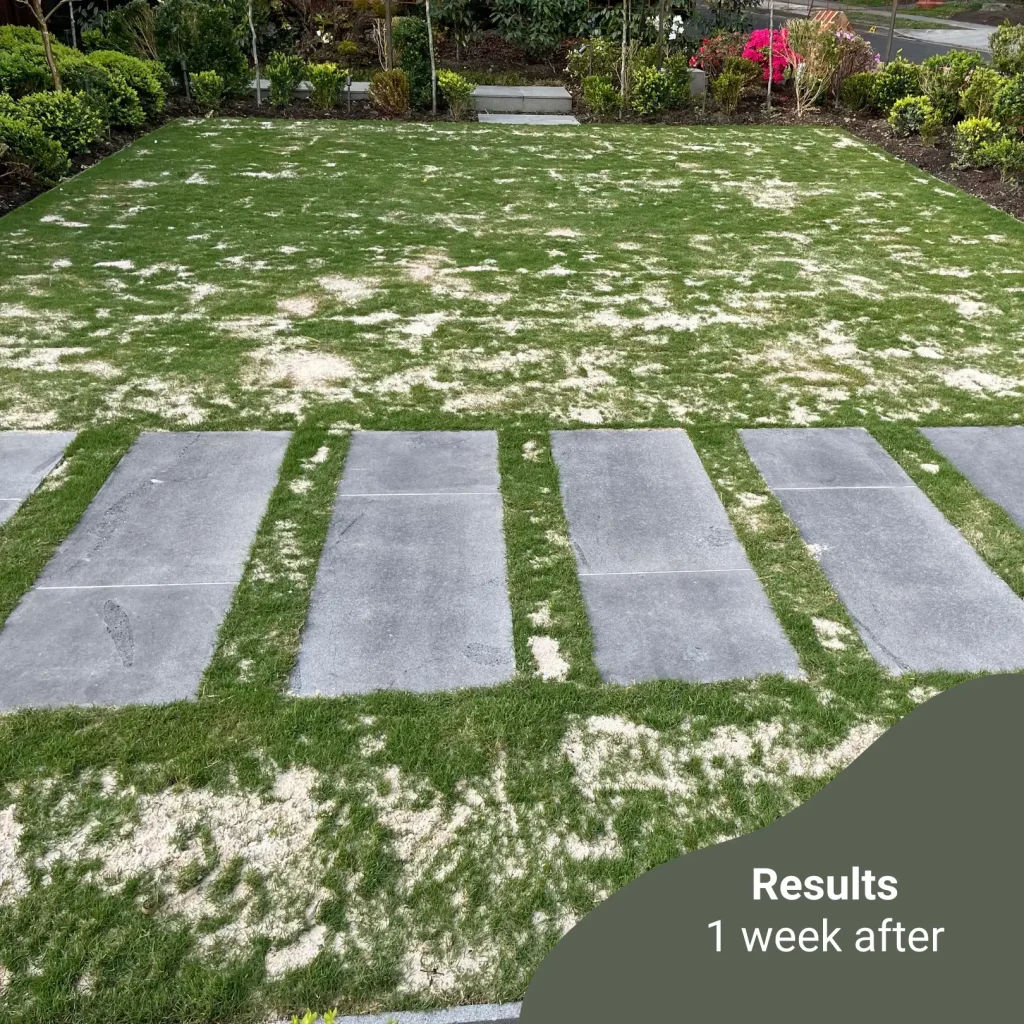
Other Tips
If your lawn is cool-season grass (Fescues etc.), we don’t recommend scalping. Coring, applying a light top-dress, and fertiliser treatments will ensure that you maintain a healthy lawn. If you have a Buffalo lawn, we don’t really recommend scalping. You can core and scarify an established lawn (and top-dress), but you need to be very selective if wanting to scalp; we recommend seeking expert advice on the best practice.
